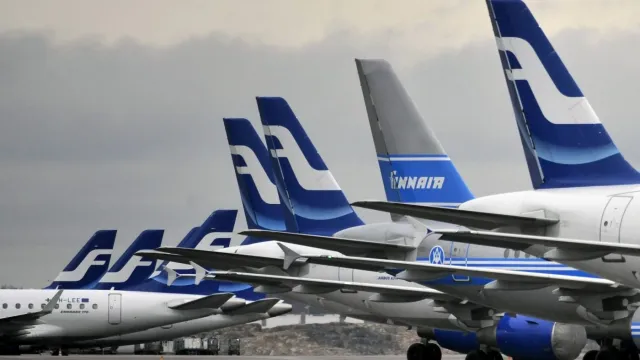Finnish airline Finnair has started weighing passengers along with their carry-on luggage before takeoff. The initiative, which began on Monday, is entirely voluntary and anonymous, and aims to gather accurate data for optimizing aircraft balance calculations.
According to a press release by Finnair, the “weighment area” for this new program will be strategically located around departure gates at Helsinki Airport. This effort is part of the airline’s commitment to ensuring the safe operation of its flights through precise average weight calculations.
We use the weighing data for the average calculations required for the safe operation of flights, and the collected data is not linked in any way to the customer’s personal data,” said Satu Munnukka, Finnair’s Head of Ground Processes. She further explained that the process includes recording the total weight of the customer and carry-on baggage, alongside the customer’s age, gender, and travel class, without collecting any identifiable information.
Since the program’s launch, around 600 passengers have volunteered to be weighed, demonstrating a positive customer response to participating in this data collection initiative.
The airline added that this data collection is crucial for adhering to safety regulations, as each aircraft has a maximum weight limit that includes passengers, luggage, fuel, and other essentials. This limit ensures the aircraft’s safe takeoff. Finnair has relied on average weights based on its measurements since 2018, but regulatory requirements necessitate an update every five years.
Finnair’s approach to updating this data could include using its measurements with the Civil Aviation Authority’s approval or adopting standard weights defined by the European Aviation Safety Authority (EASA). The collected data will be submitted to the Finnish Transport and Communications Agency between July and September 2024, contributing to aircraft balance and loading calculations for the years 2025–2030.
(YWN World Headquarters – NYC)












5 Responses
Hopefully, the airlines will first find some solution for clearly obese passengers “spilling over” to an adjacent seat, making life miserable for the paying occupant of that adjacent seat. There is an organized lobby for such individuals claiming an “entitlement” to whatever space they need w/o having to pay any added fees or c’v, having to puchase a second seat for their other cheek.
another control commitment….seems to be popular, like Candy Crush, you make an error you get punished, this is the way of Christianity…all through, it is needling and closing in with rules….not rewards rules…Nazis _____they already know how to fly. they have been for shame on these morons
If it’s voluntary the sample will include a disproportional number of lighter people, which will lead to an underestimate of the average passenger weight in each category.
Also the headline is atrocious clickbait that has nothing to do with the content.
Why is it fatphobic? It’s physics.
I was weighed once on a Hawaiian airlines flight. The plane was tiny I think a Cessna and I had to sit on a bench seat in the back so we could take off. There were no seat assignments it was done soley by weight of passenger holding their carry-on baggage. Would have been nice to have been allowed to sit near my husband but thankfully the woman next to me was kind and held my hand while I was nervous during takeoff.
What’s really scary though, I was on a regular smaller plane once (40 passengers maybe) and they said they needed volunteers to have their luggage bumped to the next flight. I don’t want to be that close to the maximum weight capacity that a few 30lb suitcases are the differnce between a successful flight or not.
SACTS and Millhouse make excellent points. Self-selection in this case is 100 percent certain to elicit voluntary weight figures for the more svelte demographic and a serious under-estimate of average flyer weight. This outcome could actually pose a significant risk for smaller aircraft flying out of short-runway airports and even more dangerous on hot humid days when it takes more thrust/lb of aircraft weight to get airborne.